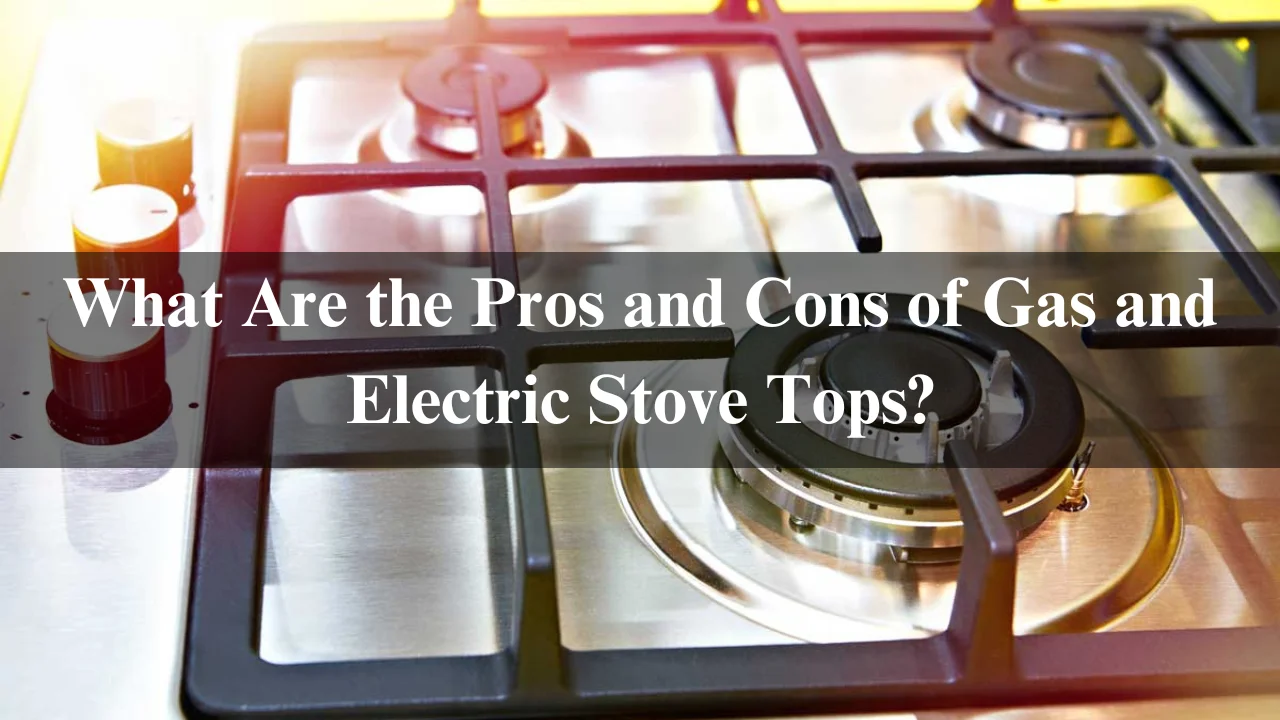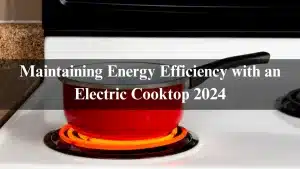When choosing a stove for your kitchen, the debate between gas and electricity is as heated as the flames they produce. Each option has advantages and drawbacks that can significantly impact your cooking experience. Whether you’re a culinary novice or an experienced chef, understanding these differences can help you make the right decision for your home.
Join us as we explore the pros and cons of gas and electric stoves, delving into costs, environmental concerns, performance, and more to determine which one might best suit you. Let’s get cooking!
Table of Contents
A Personal Touch: My Journey with Gas and Electric Stoves
Before we jump into the details, let me share a bit about my experience. As someone who has remodeled kitchens and experimented with various stoves, I’ve had the opportunity to cook on gas and electric stoves. I’ve felt the instant heat of a gas flame and experienced an electric coil’s slow, steady warmth. Each has its merits and drawbacks, and I’m here to share everything I’ve learned.
What Is a Gas Stove?
A gas stove is a cooking appliance that uses natural gas or propane as its primary fuel source. It features burners on the cooktop, which produce flames that can be adjusted for different heat levels. This allows for precise temperature control while cooking.
Gas stoves have been popular in kitchens for decades due to their instant heat and immediate response to adjustments. When you turn the knob, the flame ignites, providing immediate warmth to your pots and pans.
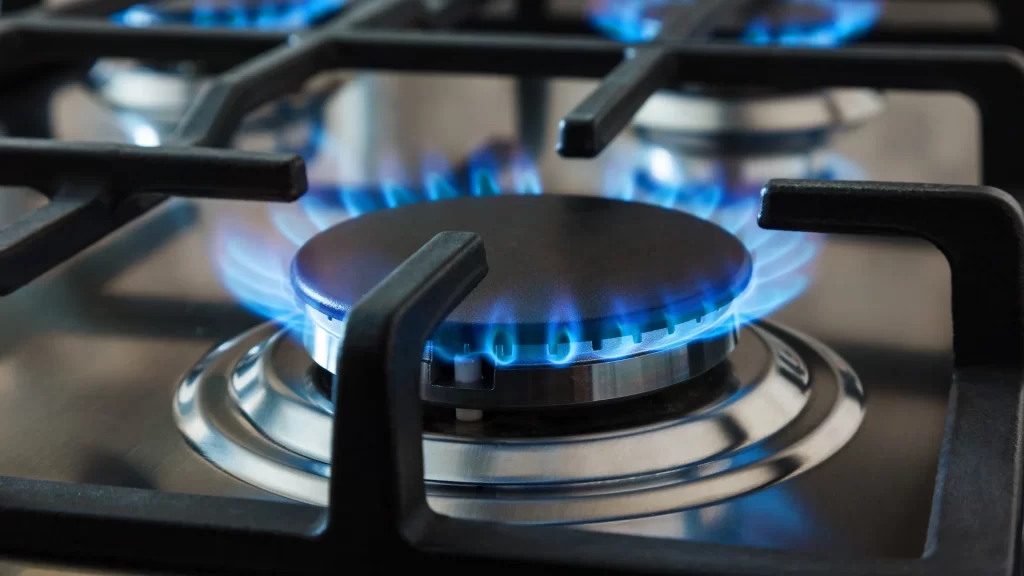
These appliances typically come in various styles and sizes, fitting standard and modern kitchen designs. Their versatility makes them suitable for everything from simmering sauces to searing meats.
In addition, many chefs prefer gas stoves because they offer visual cues through visible flames. This helps gauge how much heat is being applied at any moment during meal preparation.
What Are the Pros and Cons of a Gas Stove?
Pros of Gas Stoves
Gas stoves have long been a favorite among many cooking enthusiasts. One major advantage is the instant heat they provide. You can control the flame quickly, making adjustments easy for precision cooking.
Another benefit is that gas stoves often cook food more evenly. The direct flame distributes heat effectively across pots and pans, enhancing overall performance.
- Instant Heat: Gas stoves provide immediate heat, perfect for quickly searing meats or boiling water.
- Precise Temperature Control: The flame’s intensity can be adjusted instantly, giving you precise control over cooking temperatures.
- Works Without Electricity: A gas stove will still function in case of a power outage, which is a significant advantage for those in areas prone to electrical disruptions.
- Versatility: Gas stoves are compatible with all types of cookware, including cast iron and works.
Cons of Gas Stoves
On the downside, gas appliances are notable for safety concerns. A leak can lead to dangerous situations if not monitored properly. Proper ventilation is also crucial to prevent harmful fumes from accumulating in your kitchen.
Additionally, installation costs may be higher for gas models due to necessary gas line connections. While some appreciate the aesthetic of a gas stove, others might find it less modern than sleek electric options.
- Installation Costs: Installing a gas line can be expensive if your kitchen isn’t equipped.
- Safety Concerns: Gas leaks are a serious hazard, and the open flame can be a fire risk.
- Environmental Impact: Burning of natural gas releases carbon dioxide, contributing to greenhouse gas emissions.
- Cleaning: The grates and burners of a gas stove can be more challenging to clean compared to a flat electric surface.
What Is an Electric Stove?
An electric stove is a kitchen appliance that uses electricity to generate heat for cooking. Unlike gas stoves, which rely on flames, these units offer a sleek and modern alternative. They come in various forms, including coil burners and smooth-top models.
Electric stoves typically have heating elements beneath the surface. When switched on, they transfer heat directly to pots and pans, providing consistent temperatures for different cooking methods.
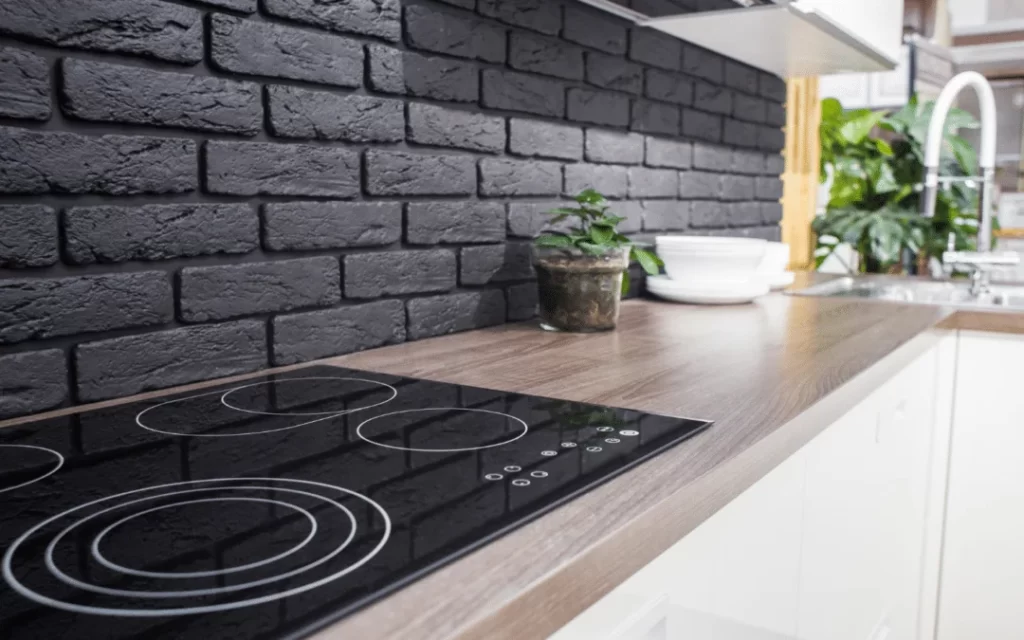
Many users appreciate the ease of use with electric stoves. With just a turn of a knob or push of a button, you can control the temperature precisely.
Additionally, they require less ventilation since no combustion occurs during operation. This makes them suitable for apartments or smaller kitchens where space might be limited. Electric stoves also have simpler cleaning processes due to their flat surfaces.
What Are the Pros and Cons of an Electric Stove?
Pros of Electric Stoves
Electric stoves have become increasingly popular in modern kitchens. One significant advantage is that it is easy to use. Simply turn a knob, and you’re ready to cook.
They also offer precise temperature control, allowing for more consistent cooking results. This makes them ideal for delicate dishes that require specific heat levels.
- Even Heating: Electric stoves distribute heat more evenly across the cooking surface, which is great for tasks like simmering.
- Easy Cleaning: Smooth-top electric stoves are easier to clean because of their flat surface.
- No Gas Line Needed: Installation is simpler and often cheaper, as it only requires an electrical outlet.
- Safer Cooking Environment: The fire risk is reduced without an open flame, making electric stoves safer in some scenarios.
Cons of Electric Stoves
On the downside, electric stoves can take longer to heat up than gas alternatives. This might not suit everyone’s cooking style, especially when speed is needed.
Another consideration is the power source; if there’s an outage, your stove won’t work until electricity returns.
Cleaning can be straightforward on smooth-top models, but spills may burn onto burners if addressed slowly. Heavy cookware can also scratch the surface easily.
- Slower Heat Response: Electric stoves take longer to heat up and cool down, which can be frustrating if you’re used to the immediate gas heat.
- Power Dependency: Your electric stove won’t work during a power outage, which can be a significant disadvantage.
- Less Precise Temperature Control: Electric stoves are consistent, but they don’t offer the same precise control as gas stoves.
- Cookware Compatibility: Certain electric stoves, especially induction models, require specific types of cookware.
Gas vs. Electric Stoves: Which is Better for Cooking?
Choosing between gas and electric stoves depends on your cooking style and priorities. Let’s break it down:
Appearance
When it comes to appearance, gas and electric stoves offer distinct styles.
Gas stoves often have a classic, professional look that appeals to many chefs. The visible flame adds an element of control and depth to the cooking process. Stainless steel finishes can enhance this aesthetic, making them suitable for modern kitchens.
On the other hand, electric stoves present a sleek and minimalist vibe. Their smooth top surfaces are easy on the eyes and seamlessly integrate into contemporary kitchen designs. Options like ceramic or glass tops add elegance while being functional.
Choosing between these two largely depends on personal preference in design, as both types can beautifully complement various interior styles without compromising functionality.
Cost
Cost is a significant factor when choosing between gas and electric stoves. Gas stoves tend to have lower upfront costs. Installation often requires some plumbing work, but they can be more economical in the long run.
Electric stovetops usually start with higher initial prices. However, installation is typically simpler since most homes have ready electrical outlets.
Monthly utility bills also influence cost considerations. Gas is cheaper than electricity in many areas, leading to potential savings over time.
Keep in mind that energy prices fluctuate based on market conditions. This variability can influence your overall expenses depending on where you live and how often you cook.
When evaluating your options, consider both immediate costs and long-term energy expenditures to make an informed decision tailored to your cooking habits and budgetary needs.
Environmental Concerns
Environmental concerns play a significant role when considering gas and electric stove options. Gas stoves rely on natural gas, which is a fossil fuel. Burning this fuel releases carbon dioxide and other pollutants into the atmosphere, which can contribute to climate change and air quality issues.
On the other hand, electric stoves have their own set of challenges. The source of electricity matters significantly. The environmental impact may be higher than expected if your grid relies heavily on coal or oil. However, electric cooking becomes more eco-friendly as renewable energy sources grow in popularity.
Energy efficiency is another factor to consider. Electric stovetops convert about 90% of their energy into heat for cooking compared to around 40-55% for gas burners. Choosing an environmentally responsible option requires looking beyond just functionality and understanding your broader ecological footprint.
Health and Safety
When considering gas and electric stoves, health and safety are paramount. Gas stoves can release carbon monoxide if not properly ventilated. This odorless gas is dangerous in enclosed spaces, making good ventilation essential for safety.
Electric stoves generally offer a safer cooking environment. They don’t produce combustion gases like their gas counterparts. However, they come with their risks. Hot surfaces can lead to burns if touched inadvertently.
Food preparation hygiene is crucial regardless of the stove type chosen. Regular cleaning helps prevent harmful bacteria from thriving on cooking surfaces.
For families with young children, consider models with child locks or features that minimize accidental ignition or surface contact. To reduce fire hazards in the kitchen, always prioritize flammable materials’ distance from any heat source.
Awareness of these factors ensures safe cooking experiences at home while enjoying your culinary adventures.
Performance
Regarding performance, gas and electric stoves offer different experiences for cooks.
Gas stoves heat up instantly, giving you immediate control over the flame. This responsiveness allows for precise temperature adjustments during cooking, which is why chefs often prefer this feature for tasks like sautéing or simmering.
On the other hand, electric stoves typically provide even heating across their surfaces. While they take longer to preheat, they maintain consistent temperatures well once heated. This can be beneficial when baking or melting ingredients.
However, gas might have the upper hand here if you’re a fan of quick searing or boiling water rapidly. Electric models do excel in slow cooking methods where patience is key.
Your cooking style will heavily influence which stove performs better for you. Each type has its strengths that cater to different culinary needs and preferences.
Maintenance
Maintaining a gas stove requires regular attention to ensure safety and efficiency. Keeping burners clean is crucial to avoid flare-ups or uneven heating. A simple wipe-down with soapy water after each use can do wonders.
For electric stoves, maintenance focuses on the cooktop surface. Smooth glass tops should be cleaned carefully to prevent scratches, and removing spills promptly helps maintain their shine.
Both types of stoves benefit from periodic inspections. In gas models, use a soap solution around connections to check for gas leaks. Inspect cords and plugs for wear or damage to electric stoves.
Replacing worn-out parts like burner caps or heating elements is essential for optimal performance. Regular tuning ensures that your cooking appliances remain efficient and safe over time, allowing you to enjoy your culinary adventures without interruptions.
Durability
Both gas and electric stoves have strengths when it comes to durability. Gas stoves are often considered more robust because they typically feature heavier materials like cast iron and stainless steel. These components resist wear over time, making them a long-lasting choice for many households.
On the other hand, electric stoves may be less sturdy regarding physical elements. However, technological advancements mean that modern electric stovetops can still provide reliable performance with less risk of damage from minor accidents. Glass-ceramic surfaces found on some electric models are prone to scratching but offer sleek aesthetics.
Your choice between a gas or electric stove will depend on your cooking preferences and lifestyle needs. Each type has unique advantages and disadvantages when it comes to durability. Assessing how you intend to use the stove is essential before deciding what best fits your kitchen setup.
How do you tell if you have an electric or gas stove?
Is your stove electric or gas? Here’s how to tell:
Gas Stove Indicators
- You’ll see visible burners or grates.
- You can ignite the stove with a lighter or match.
- You might hear a clicking sound when turning on the burner.
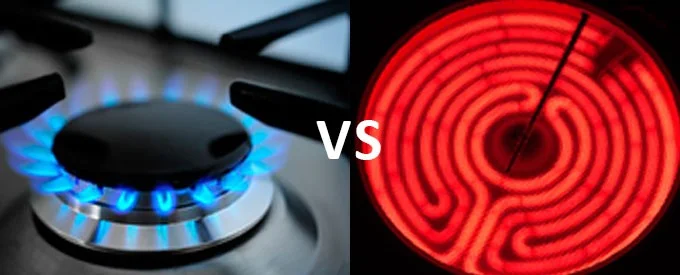
Electric Stove Indicators
- You’ll see coils or a flat, smooth surface.
- The stove heats up after being turned on without an open flame.
- The heating elements glow red when in use.
Electric vs. Gas Stoves: Which Is Better for Cooking?
The choice between electric and gas stoves depends on your cooking preferences. Here’s a quick comparison:
| Feature | Gas Stove | Electric Stove |
| Heat Response | Immediate, responsive | Slower to heat up and cool down |
| Temperature Control | Highly precise | Consistent but less precise |
| Cooking Style | Best for high-heat, fast cooking | Ideal for simmering and baking |
| Environmental Impact | Higher if using fossil fuels | Lower if using renewable electricity |
| Installation Costs | Higher due to the gas line | Lower requires only an outlet |
| Running Costs | Depends on gas prices | Depends on electricity rates |
| Safety | Risks of gas leaks, open flames | Safer, no open flame |
| Cleaning | More complex with grates/burners | Easier with smooth-top |
| Durability | Generally long-lasting | Potentially shorter lifespan |
Related Articles:
Does A Gas Stove Use Electricity For The Oven? In 2024
Does a gas cooktop need electricity? Complete Info 2024
Converting Electric Cooktop Into Modern Kitchen Design 2024
Do all electric stoves have the same problems?
Conclusion
Choosing between a gas and electric stove top ultimately depends on your cooking style, budget, and kitchen needs. Gas stoves offer precise temperature control and quick adjustments, making them ideal for those who love to cook with instant heat. On the other hand, electric stoves provide even heating and are often easier to clean, appealing to those who prefer a more straightforward cooking experience. By weighing the pros and cons of each, you can select the stove that best complements your culinary preferences and lifestyle. Whether you go with gas or electric, the most important thing is that it fits your kitchen and brings joy to your cooking.
FAQs
Is it cheaper to cook with gas or electric?
It depends on local energy prices, but gas is generally cheaper than electric stoves. However, the cost of installation and maintenance can offset these savings.
Can I use the same cookware on both gas and electric stoves?
Yes, most cookware can be used on both gas and electric stoves. However, flat-bottomed pans work best on electric stoves, especially smooth-top models.
Which stove type is safer?
Electric stoves are generally safer as they don’t involve an open flame, reducing fire risk. However, both types have safety concerns, such as gas leaks or hot surfaces.
How long do gas and electric stoves typically last?
Gas stoves are more durable and can last 15-20 years with proper maintenance. Electric stoves, especially smooth-top models, may last 10-15 years, depending on usage and care.

